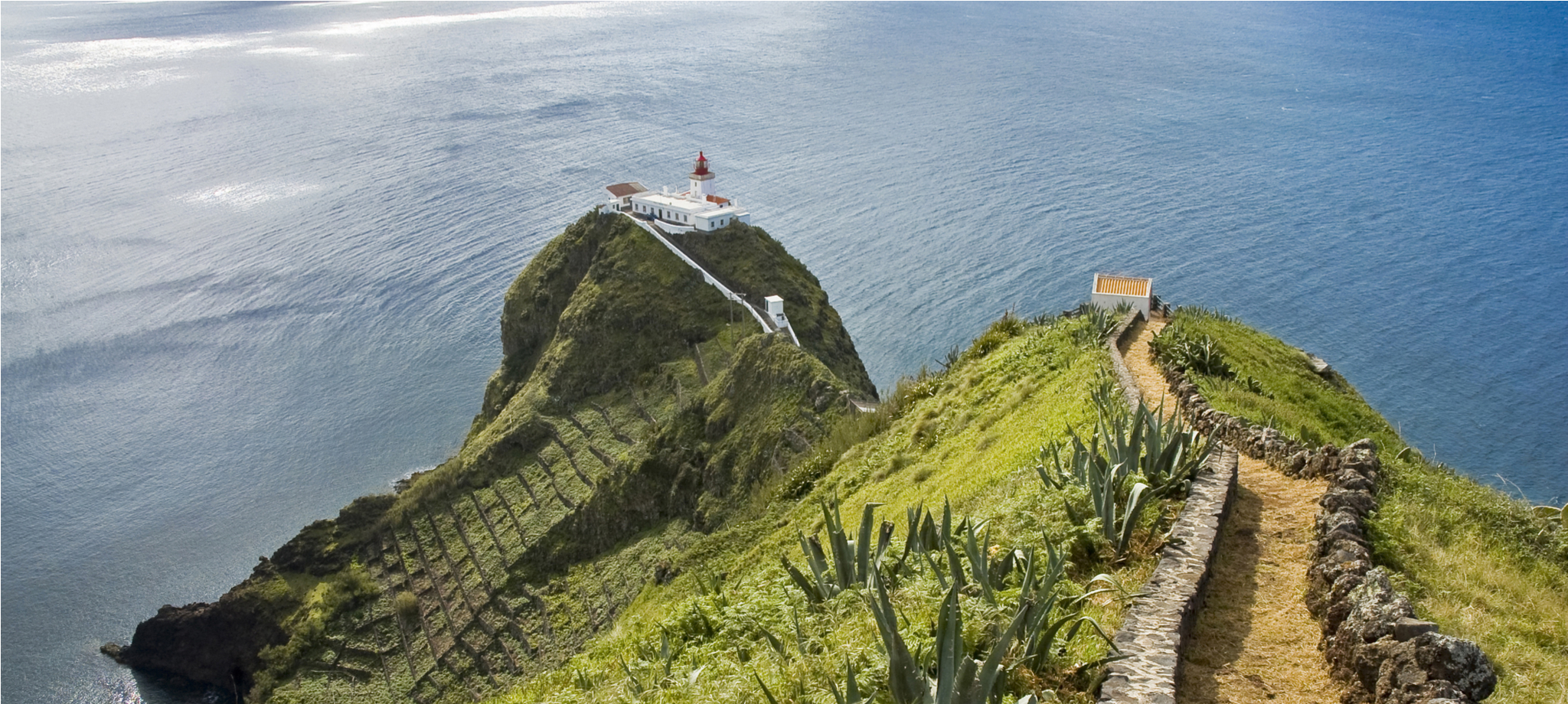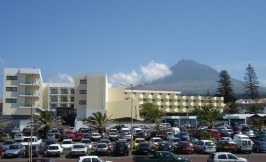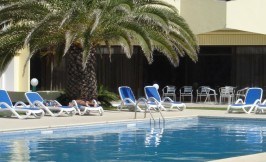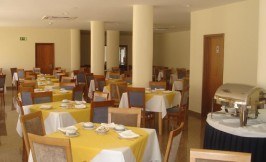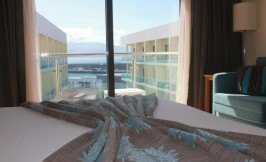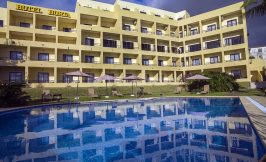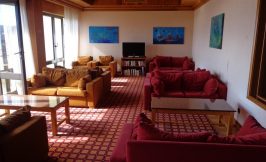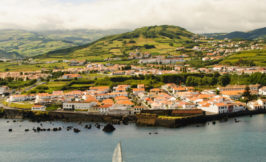Tour Overview
7 Days, 6 Nights - Visit at your own pace these two islands, driving surrounded by the presence of volcanoes and wineries. Pico Island has the tallest mountain of Portugal with an elevation of 7713' and it's considered the youngest island of the Azores for its many young lava flows and another reason why this island is not a beach destination. Faial, famous for its Marina and paintings, a former port for ships on transatlantic routes between Europe and the Americas. This island is an obligatory stop for yachtsmen and sailors. 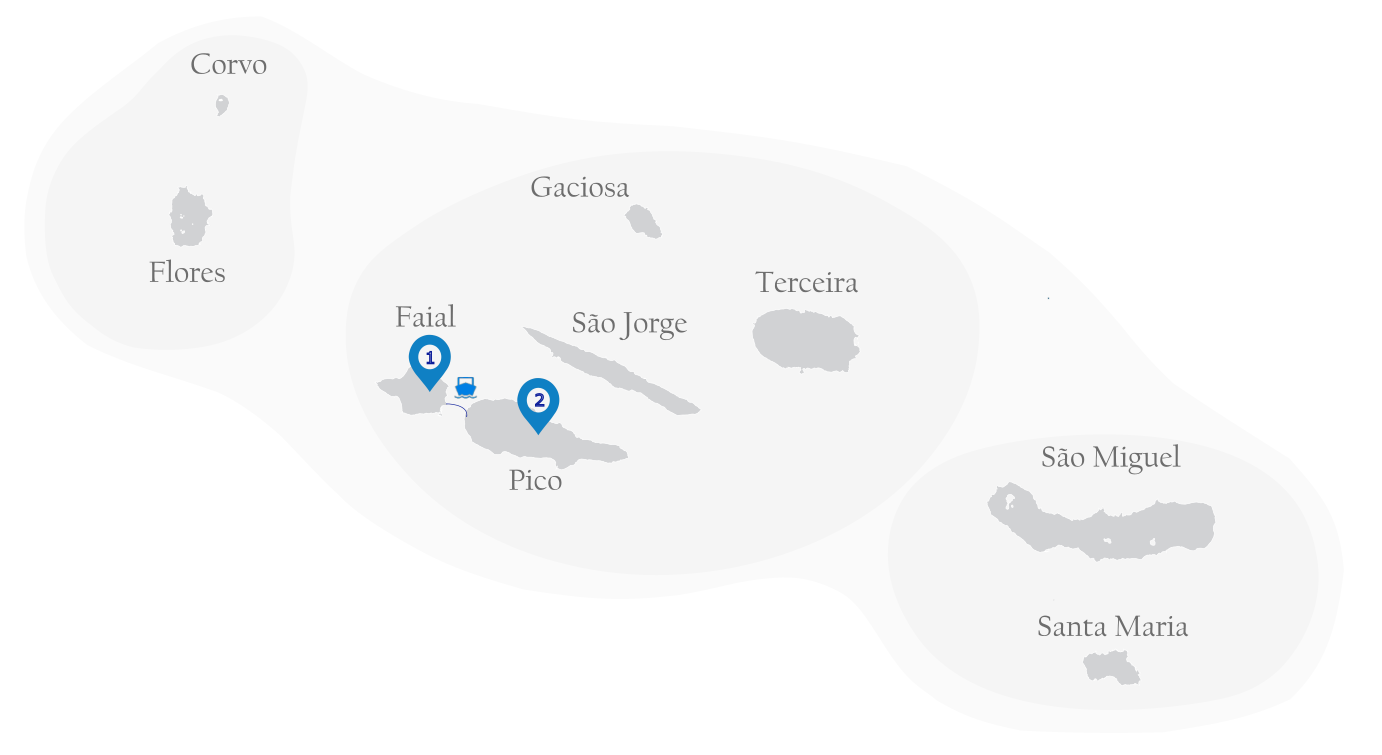
Please Note
We created self-drive packages to provide our customers with pre-planned services that include accommodations, rental car, ferry and air tickets. We do not provide daily planning and itineraries. However we do recommend that you check information such as we have on our pages (click here) or purchase a guide book (click here). We also recommend you check our guided tours (click here) which are more descriptive of specific itineraries and places to visit.
Suggested Itinerary
Day 1 - Pico
Arrive Pico island.
Day 2 - Pico
Points of interest for this island:
- Pico Mountain with an altitude of 7713' stands as a challenging hike
- Whaler museums in Lajes, Sao Joao, and Sao Roque are worth visiting and depict an important historic and era of Pico
- Wine tasting in Madalena and visiting the UNESCO protected wine country in Lajido, Cabrito, and Madalena
- Gruta das Torres. A must-do in Pico features the longest lava tube in Europe
- Pico features the best natural swimming holes in the Azores. Worth mentioning: S. Prainha, S. Roque, Santo Antonio, and Madalena
- Wine tasting in Madalena and Museu do Vinho
- Whale observation in Sao Joao and Lajes.
Day 3 - Pico
Day to explore. Optional tours available: Tours, hikes and sea activities. Please contact us for prices.
Day 4 -Pico/ Faial
Check out from the hotel and leave the car at the harbor. Ferry trip from Pico to Faial, 30 minutes duration. Arrival to Horta harbor and pick up the car. Check in at your hotel in Horta for 3 nights with breakfast included.
Day 5 - Faial
Points of interest:
- Cabecao Gordo – Located at the center of the island with an altitude of 3422 feet (1043 meters), offers amazing views of the neighboring islands of Pico and Sao Jorge.
- The Caldeira – An enormous crater with 6560 feet (2 km) diameter and 1300 feet (400 m) deep, classified as a natural reserve.
- Monte da Guia – A mountain from where you can have a look over the town; also a protected natural reserve.
- Ponta dos Capelinhos – One of Faial’s main tourist attractions. Here visitors can see the results of the eruption of 1957/8 which transformed the landscape, burying fields and houses. The old lighthouse can still be seen.
- Lajinha and Ponta Furada – Great attraction for their caves and strange lava arches, where the sea crashes violently against the rocks.
- Vale de Flamengos – Attractive area full of colorful plantations, flowers and picturesque houses.
- Scrimshaw Museum – This is a private collection belonging to the owner of the popular Peter’s. Over a hundred pieces are exhibited here, engraved with beautiful sailing boats, mermaids, images of whale-hunting, among many others.
- Horta Museum – Housed in the former Jesuit College, the museum is noted for its collection of fig wood, one of the island’s traditional handicrafts.
- Port of Horta – Built in 1876, this important sea-port is a principal port-of-call for many transatlantic yachts. The sea wall is of special interest as it is covered with hundreds of paintings and messages left by the sea-travelers who call in at the port.
Day 6 - Faial
Free day to continue exploring. Optional tours available: Tours, hikes and sea activities. Please contact us for prices.
Day 7 - Faial
Check out from the hotel and drop off the car at the airport.
What's Included
Included:
- 6 Night Accommodations
- Daily breakfast
- 7 Day car rental
- Ferry tickets Pico/Faial
- Automatic transmission vehicle
- Unlimited kilometers
- Airport and hotel taxes
- Basic CDW and TP insurance
- 24 Hour assistance
Not included
- International Airfare. Please contact us for a quote
- City taxes, paid at hotel check-in
- Meals other than mentioned above
- Super-CDW insurance
- Fuel
Dates & Rates
Departure Date Between:
5/10/2025 and 5/23/2025
- Solo Comfort: US $1816/person
- Single Comfort: US $1455/person
- Double Comfort: US $1033/person
- Triple Comfort: US $900/person
5/24/2025 and 9/30/2025
- Solo Comfort: US $2221/person
- Single Comfort: US $1845/person
- Double Comfort: US $1267/person
- Triple Comfort: US $1070/person
10/1/2025 and 10/31/2025
- Solo Comfort: US $1915/person
- Single Comfort: US $1539/person
- Double Comfort: US $1117/person
- Triple Comfort: US $956/person
11/1/2025 and 12/31/2025
- Solo Comfort: US $1485/person
- Single Comfort: US $1209/person
- Double Comfort: US $859/person
- Triple Comfort: US $770/person
General
Booking Your Trip
- While prices are shown in USA dollars, we can also charge in Euros at the prevailing currency conversion daily rate.
- Early booking is advised. Availability of accommodations
and
inter-island flight is limited especially in summer months.
- If hotels named in itinerary are not available at time of booking, alternate similar
same rating properties will be confirmed, and subject to new quote.
- Order of islands visited may need to be altered due to
flight schedule changes.
- Unless otherwise indicated, rental car is included for all islands.
- Quotations with different hotels have a non refundable deposit
of $50. Deposit will be credited towards final booking price.
Booking Your Trip With Air
- International airfare for this package is additional to
price shown on Rates table. Departure cities are limited to those serviced
by SATA International (Azores Airlines).
- If you want a quote for airfare to be included make sure to
check yes when prompted during the booking/reservation
request process.
Booking Conditions
- A non-refundable, non-transferable deposit of $350 per
person per vacation is required to book and hold both land and air for you.
- Final payment is due 50 days before departure.
- Option to pay full price up front is available.
Cancellation Policy - Land Portion
- $350 per person if canceled up to 50 days prior departure.
- 25% of total reservation if cancelled 49-39 days prior departure plus any other additional fee.
- 50% of total reservation if canceled 38-31 days prior departure plus any other additional fee.
- No refunds if canceled less than 30 days prior departure.
Cancellation Policy - Airfare
- Airfare cancellation terms and conditions will be provided to you before ticket is booked.
Refund Fees
- A 3.9% credit card assessed fee will be subtracted from any refunded payment, including deposits refunded due to services requested not available for date of booking.
I Want To Book. What Do I Do Next?
- Click on the Book Now button to send your reservation request.
- No payment will be collected at this time.
- Our travel Associate will contact you via email to answer any questions and book your Package
- If you don't plan to book at this time please click here to contact us with any questions or concerns about your trip or your holiday
.
Booking Changes
- A fee of $35 per person, per transaction, will be charged
for any revision or alteration made to a reservation after the booking
is confirmed.
- If the change increases the value of the booking, the $35
per person fee will be waived.
Travel Insurance
- We strongly recommend you purchase travel/cancellation
insurance.
Hotels
Comfort Hotels
Madalena - Hotel Caravelas
Located on Madalena’s waterfront, Caravelas is surrounded by the Atlantic Ocean on 3 sides and overlooks Faial Island. It features an outdoor pool, a 24-hour front desk, and car rental.
The air conditioned rooms at Hotel Caravelas open out onto private balconies with views of the ocean or Pico Mountain. All rooms include a flat-screen TV with satellite channels, a minibar, and a private bathroom.
Guests can enjoy a daily buffet breakfast at the restaurant of the hotel, or discover the many cafés that surround the property, serving traditional Azorean specialties. The in-house bar offers soft drinks and the renowned Pico Wine.
Horta - Hotel Horta
Located in the old Azorean town of Horta, the newly-renovated Hotel Horta offers views of Pico Island. It features rooms with balconies, a large garden and an outdoor pool.
Horta’s rooms are decorated in neutral colors, and have wooden furniture. Each of the air-conditioned rooms has a cable TV and a private bathroom with a hairdryer.
The hotel’s panoramic restaurant offers international and regional dishes. The bar and the lounge offer views of the outdoor pool, the pool bar and the garden.
Guests can rent a bicycle to explore the surrounding area. Horta is famous for the whale watching and the volcanoes of Capelinhos and Caldeira.
Horta Airport is 4.3 mi away, and the hotel provides free private parking on site.

